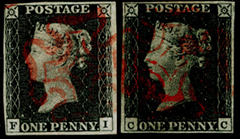 First Issues Collectors Club
of stamps and philatelic material
First Issues Collectors Club
of stamps and philatelic material
Home - Catalog - Categories - Index - Journal - Exhibits - Auctions - Forgeries - Join
 First Issues Collectors Club
of stamps and philatelic material
First Issues Collectors Club
of stamps and philatelic material
Home - Catalog - Categories - Index - Journal - Exhibits - Auctions - Forgeries - Join
| first issues > countries > bolivia |
Imperforate, no watermark, engraved.
Printed by Ramon Estruch.
| Description | # printed | # Escalier | Scott | SG | Mi | Y&T |
|---|---|---|---|---|---|---|
| Mid 1867. Available nationally. | ||||||
5 centavos green |
430,242 | 1,509,858 | 1 & 2 | 1 - 3 | ||
10 centavos brown |
70,000 | 4 | 4 - 7 | |||
50 centavos yellow |
325,000 | 38,520 | 5 | 8 | ||
100 centavos blue |
225,000 | 16,500 | 7 | 9 | ||
| Later in 1867, for sale in La Paz province only | ||||||
5 centavos many shades of violet |
170,000 | 3 | 10 | |||
50 centavos medium blue |
30,000 | 6 | 11 | |||
100 centavos medium green |
160,000 | 8 | 12 | |||
The most accurate number issued is most likely the one in the column marked # Escalier - they are due to the Bolivian philatelist Marcos G. Escalier.
On February 21, 1863 president de Acha issued a decree to reorganize the postal service. Stamps were to be introduced, but in this case the postal service would be auctioned to the highest bidding private company. Justiniano Garcia won the bidding at the minimum 17,000 pesos. A contract was signed on March 18, 1863 and service was to begin on June 1, 1863.
Senor Garcia prepared for the printing of his stamps, as instructed by the contract. However, political intrigues caused the contract to be suspended as of April 29, 1863 until the national assembly had ruled in the matter. This never happened. This means that the contract was effectively cancelled, only 42 days after it was signed. Unfortunately, Senor Garcia had already printed some of his stamps. They were never issued, but a few exist with cancels. These cancels are forgeries or were applied by favor. Very few covers with Garcia's stamps exist, but all of them are suspect - no known cover with these stamps is known to be genuinely and postally used.
On March 12, 1867 a new president, Mariano Melgarejo, decreed that the government would issue stamps. A local printer, Ramon Estruch, was commissioned to prepare the printing plates. He engraved five plates in soft copper, including a plate for a 500 centavos stamp that was never issued.
The soft copper plate wore out quickly. However, the 5 centavos was the only value printed in large quantity, and therefore had to be re-engraved four times and retouched six times.
Senor Estruch did not have the capability to make a master die, and therefore he engraved each value directly onto the printing plate as many times as there are subjects on the plate. Therefore, every subject on a plate is different, making plating easy for us stamp collectors. The stamps were placed with plenty of spacing on the plate, so we should expect large margins on a normal copy.
The original plate for the 5 centavos consisted of five rows of 12 stamps, or 60 stamps total. A sixth row was soon added, making for a plate of 72 stamps. The 10 centavos plate consisted of six rows of 13 stmps, or 78 total. The 50 and 100 centavos plates each contained 30 stamps, arranged as five stamps in six rows.
The colors vary tremendously. The 5 centavos went from originally "metallic" yellow green, via medium green to deep green and almost blue green. The 10 centavos vary little, and is a "coffee" brown color. The 50 centavos vary from pale yellow to almost orange, and the 100 centavos run the gamut from ultramarine to almost blue green.
The second issue, for sale only in the La Paz province, was printed from the same plates as the first issue. They are much scarcer postally used than the first issue.
Over half of the stamps issued we used for revenue purposes. They are often pen cancelled, and even have text from official documents written onto the stamps. Less than half the issue was postally used, most often cancelled with a straightline cancel, but sometimes a pen cancel. Oval and round cancels were also used, most commonly a La Paz circular date stamp. Buyer beware: the Scott catalog mentions that the pen (revenue) cancelled copies sell for about a fifth of the stated catalog value. Pen cancelled copies used for revenue purposes are often found in large blocks, and even whole sheets.
The Scott catalog list the 5 centavos under two different catalog numbers. There was however only one stamp issued in this value, but due to the separate engraving, the many color shades and the retouches and re-engravings, all the copies are different. The six types used to identify Scott #1 and #2 have no correspondence with the various retouches and re-engravings, contrary to what is stated in the Scott catalog. It is unknown why Scott has divided this stamp into two catalog numbers.
Except for the 5 centavos these stamps have been forged, but luckily the forgeries are often scarcer than the genuine stamps. Reprints also exist.
Much more information is available in the article "The First Issue of Bolivia" by Art Bunce, First Issues v5n3p4 and continued in v5n5p3. This presentation is a small extract of that article.
Image from David Olson.
| FI ref: 140 | Page credit: JA |
| Page created 19 Feb 2014 | Page updated 13 Feb 2016 |